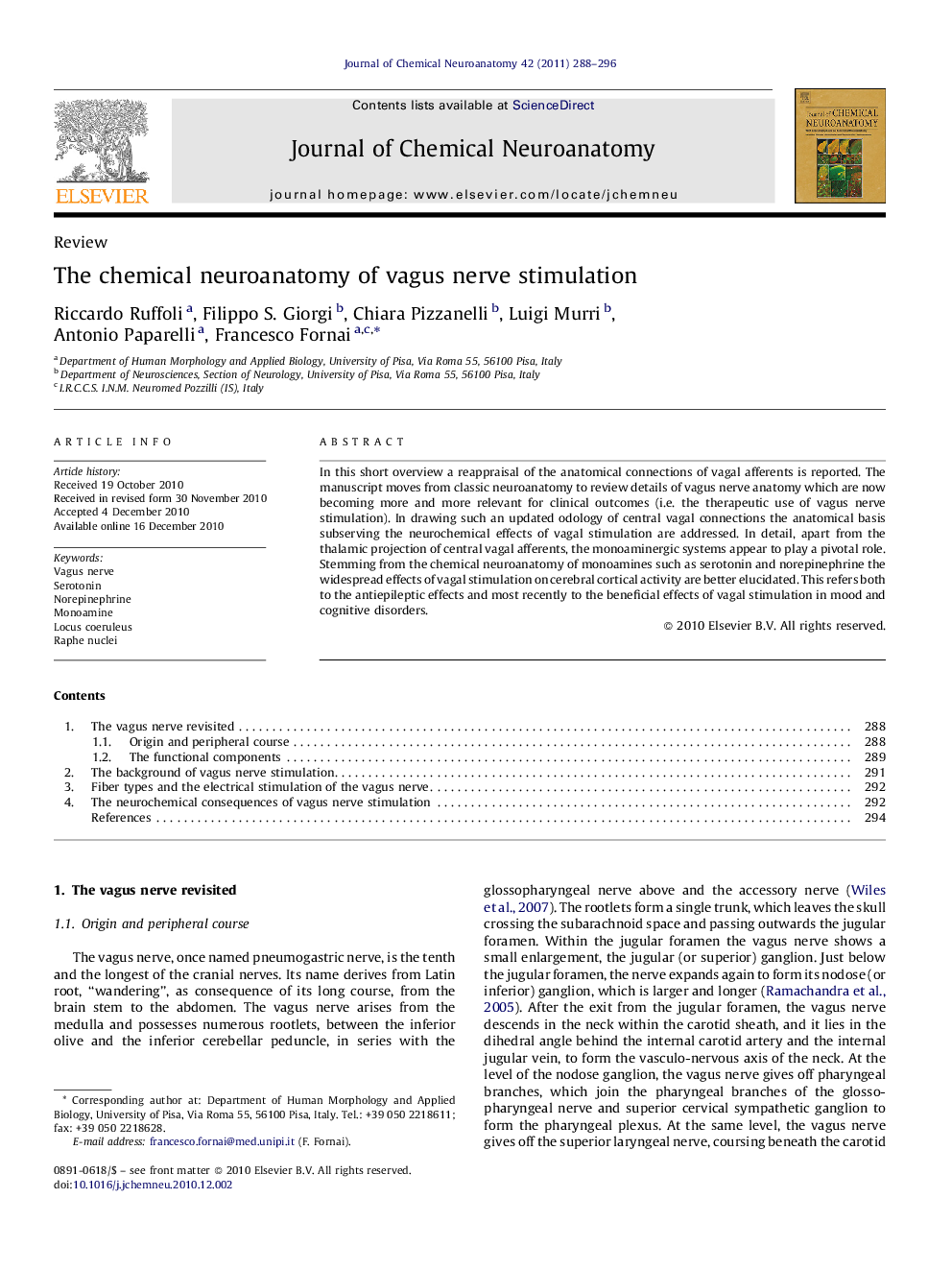| Article ID | Journal | Published Year | Pages | File Type |
|---|---|---|---|---|
| 1988967 | Journal of Chemical Neuroanatomy | 2011 | 9 Pages |
In this short overview a reappraisal of the anatomical connections of vagal afferents is reported. The manuscript moves from classic neuroanatomy to review details of vagus nerve anatomy which are now becoming more and more relevant for clinical outcomes (i.e. the therapeutic use of vagus nerve stimulation). In drawing such an updated odology of central vagal connections the anatomical basis subserving the neurochemical effects of vagal stimulation are addressed. In detail, apart from the thalamic projection of central vagal afferents, the monoaminergic systems appear to play a pivotal role. Stemming from the chemical neuroanatomy of monoamines such as serotonin and norepinephrine the widespread effects of vagal stimulation on cerebral cortical activity are better elucidated. This refers both to the antiepileptic effects and most recently to the beneficial effects of vagal stimulation in mood and cognitive disorders.
Research highlights▶ Vagus nerve stimulation activates the nucleus of the solitary tract. ▶ Efficacy of vagus nerve stimulation relies on the integrity of locus coeruleus. ▶ Efficacy of vagus nerve stimulation relies on effects produced by norepinephrine. ▶ Efficacy of vagus nerve stimulation is long-lasting and plasticity-dependent.
